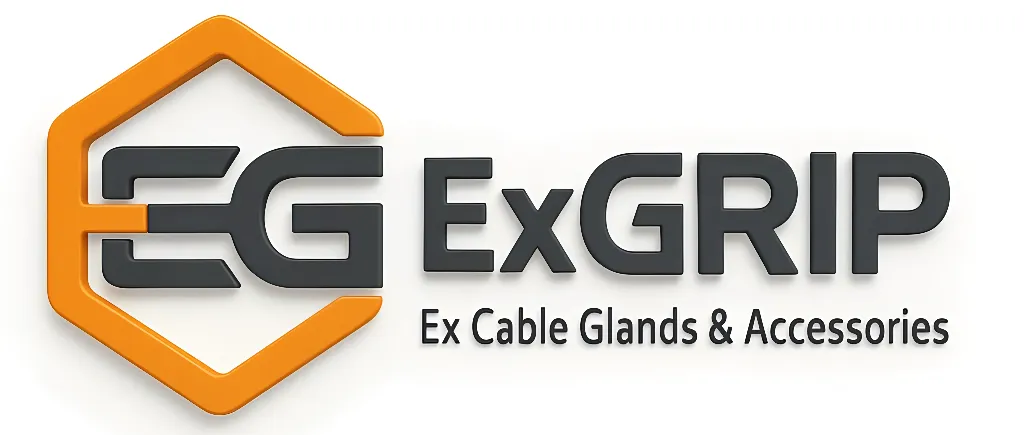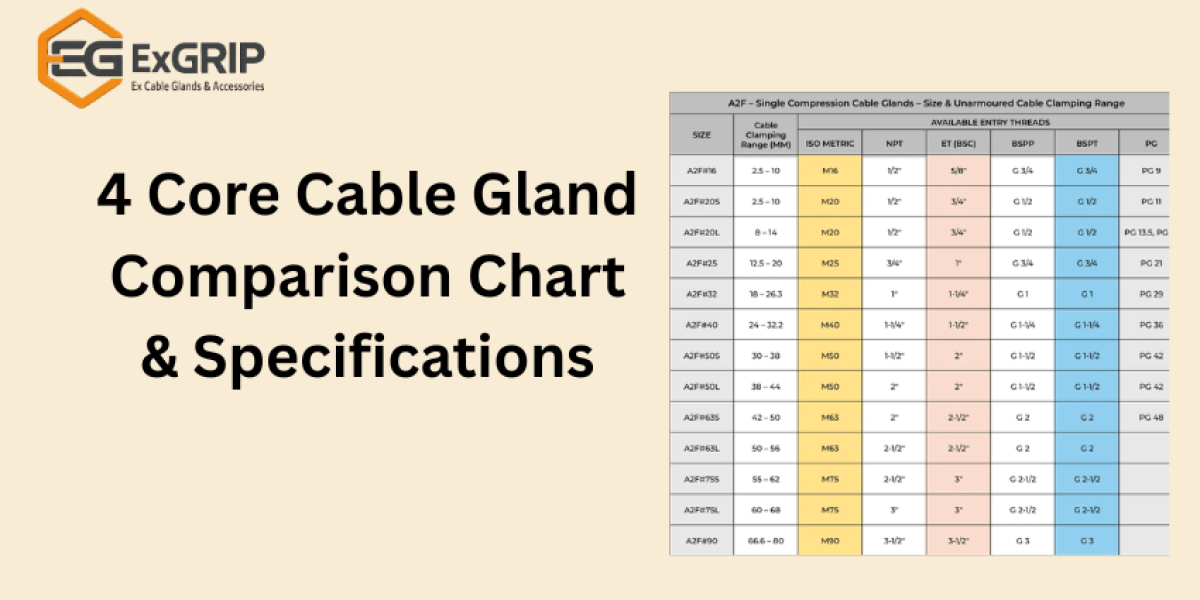Choosing the right 4 core cable gland is crucial for ensuring safety, efficiency, and long-term reliability in electrical installations. Whether used in industrial plants, commercial projects, or residential wiring systems, having a clear understanding of cable gland specifications and comparison factors helps achieve secure, durable, and compliant connections.
Why Proper Cable Gland Selection Matters
A cable gland is more than a simple fitting it acts as a protective device that shields cables from both environmental and mechanical stresses. Selecting the correct gland ensures:
Effective sealing and insulation for electrical safety
Compliance with international standards and regulations
Mechanical protection against strain and vibration
Prevention of cable damage during and after installation
Incorrect gland selection can cause cable stress, short circuits, equipment failure, or even hazardous situations. This is why reviewing technical specifications and comparison charts is essential when working with 4 core cables.
Key Specifications to Compare
When selecting a gland for a 4 core cable, engineers and installers should carefully evaluate the following:
Cable Size and Configuration
Cables are manufactured in multiple designs, such as 2×4 core arrangements. The gland must precisely match the cable’s outer diameter to ensure a tight and secure fit. Reference measurements in either inches or millimetres for accuracy, avoiding loose fittings or over-compression.
Material and Durability
Cable glands are available in brass, stainless steel, aluminium, or high-quality polymers. The choice depends on:
Exposure to dust, moisture, or corrosive environments
Indoor vs. outdoor installation
Expected lifespan and safety requirements
Brass Cable Glands
Popular for industrial use, offering durability and cost-effectiveness.
Stainless Steel Cable Glands
Ideal for corrosive or marine environments, ensuring long service life.
Polymer/Plastic Glands
Lightweight and cost-effective, typically used in indoor or less demanding environments.
Thread Type and Standards
Different thread types metric, PG, or NPT are used in gland designs. Choosing the right type ensures proper enclosure fitment and compliance with international and regional safety standards. Always confirm that the gland follows IEC, ATEX, or equivalent regulations.
Sealing and Environmental Protection
High-performance cable glands provide strong sealing against external elements. Look for:
IP ratings (IP66, IP67, IP68) for dust and water resistance
Sealing range in mm or inches
Resistance to temperature extremes and chemicals
These specifications determine if the gland is suitable for indoor, outdoor, or hazardous installations.
4 Core Cable Gland Comparison Chart
To make the selection process easier, Exgrip provides a cable gland chart that highlights:
Cable diameter ranges and matching gland sizes
2×4 core and other core arrangements
Inch and mm-based precision sizing
Protection ratings and thread compatibility
📄 See more details on the page: Cable Gland Selection Charts
This quick reference guide eliminates guesswork, helping installers choose the right gland for every application.
How to Use the Comparison Chart
Measure Cable Diameter – Identify the 4 core cable’s OD in mm or inches.
Match Gland Range – Use the chart to select a gland size that fits.
Verify Material & Protection – Ensure durability and environmental resistance.
Confirm Standards – Check compliance with IEC, ATEX, or other certifications.
By following these steps, engineers and electricians can save time, reduce mistakes, and ensure safe installations.
Expert Tips for Selection
Allow Thermal Expansion – Ensure space for expansion in high-heat conditions.
Avoid Force-Fitting – A gland should fit securely without damaging insulation.
Use Double Compression in Tough Environments – Provides additional sealing and strain relief.
Keep the Chart Accessible – Always keep the PDF gland chart handy during installations.
Conclusion
The right gland ensures safety, compliance, and performance in every project. By comparing specifications, checking cable OD, and using a cable gland size chart, you can confidently select the best solution for your installation.
👉 Download the full Cable Gland Selection PDF to make the process faster and more reliable.
At Exgrip, we provide a comprehensive range of 4 core cable glands, connectors, and accessories, certified with ATEX, IECEx, IP66/IP67/IP68, RoHS, and REACH, suitable for industrial, commercial, and residential applications.


Contact Us:



FAQs About 4 Core Cable Glands
Q1. What is a 4 core cable gland used for?
They secure 4 core cables, provide strain relief, and protect against dust, water, and environmental hazards.
Q2. What are the main types of 4 core cable glands?
Common types include brass glands, stainless steel glands, polymer/plastic glands, waterproof glands, and double compression glands.
Q3. How do I select the right 4 core cable gland?
Use a 4 core cable gland size chart or comparison chart. Match the cable OD, material, thread type, and IP rating with your application requirements.
Q4. What accessories are available for 4 core cable glands?
Reducers, adapters, stopping plugs, locknuts, and sealing washers help ensure proper installation and enhance performance.
Q5. What certifications should a 4 core cable gland have?
Look for ATEX, IECEx, IP66/IP67/IP68, RoHS, and REACH compliance to ensure safety and meet global standards.

